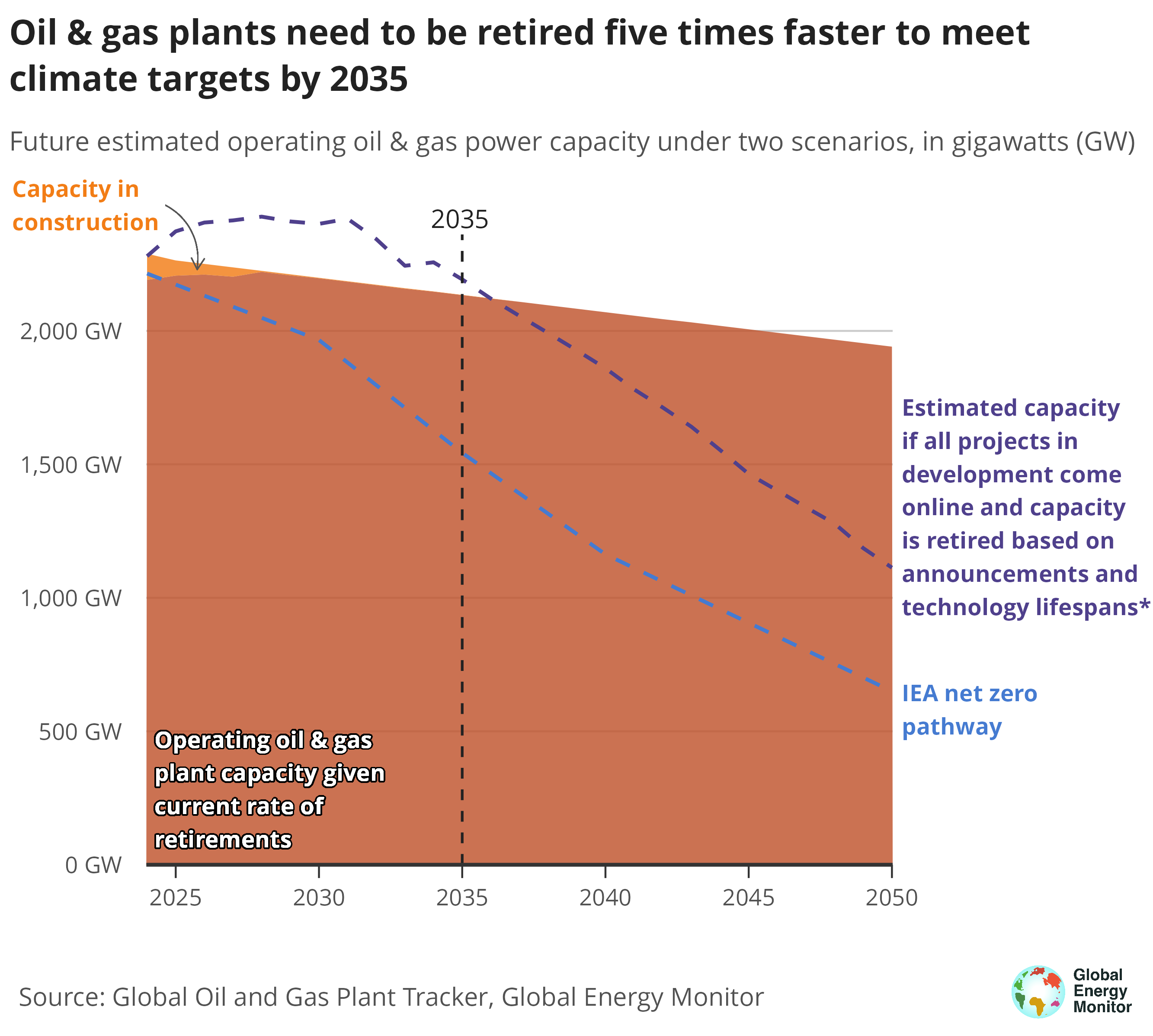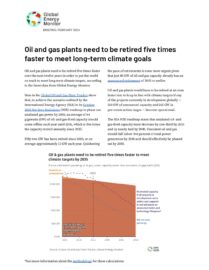Oil and gas plants need to be retired five times faster over the next twelve years in order to put the world on track to meet long-term climate targets, according to the latest data from Global Energy Monitor.
Data in the Global Oil and Gas Plant Tracker show that, to achieve the scenario outlined by the International Energy Agency (IEA) in its October 2023 Net Zero Emissions (NZE) roadmap to phase out unabated gas power by 2050, an average of 64 gigawatts (GW) of oil- and gas-fired capacity should come offline each year until 2035, which is five times the capacity retired annually since 2020.

Fifty-two GW has been retired since 2020, or an average approximately 13 GW each year. Quickening the pace of retirements is even more urgent given that just 80 GW of oil and gas capacity already has an announced retirement of 2035 or earlier.
Oil and gas plants would have to be retired at an even faster rate to keep in line with climate targets if any of the projects currently in development globally — 260 GW of announced capacity and 265 GW in pre-construction stages — become operational.
The IEA NZE roadmap states that unabated oil- and gas-fired capacity must decrease by one-third by 2035 and by nearly half by 2040. Unabated oil and gas should fall below five percent of total power generation by 2040 and should effectively be phased out by 2050.
GEM data predict that if all oil and gas plants in development are built, global overcapacity will run to 435 GW in 2030, 650 GW in 2035, and 697 GW in 2040.
This means that any new gas plants built in the future risk becoming stranded assets and either being decommissioned before the end of their economic life, having to include carbon capture and storage, or experiencing significant underutilization.
Yet countries continue to build new fossil fuel power plants, representing a critical threat to aims of the Paris Agreement to limit temperature increases to 1.5°C. Two hundred and nine GW of oil- and gas-fired power plants is currently under construction, more than a quarter of the 734 GW of capacity in development.
By comparison, 578 GW of coal-fired power capacity is currently in development globally. Yet unlike coal, where development is concentrated in a few countries, the gas expansion is global, covering almost every country in the world.
Amid record-breaking renewable energy power generation and capacity additions in 2023 and the IEA projecting that global fossil demand will peak by 2030, a fundamental shift away from these risky fossil power investments is imperative.
One place to start is with the aging global oil and gas power fleet. In particular, gas-powered steam turbines are the oldest in service, with a global average capacity weighted age of 37 years, representing an untapped potential to retire these inefficient older units.

*See more information about the methodology for these calculations.

